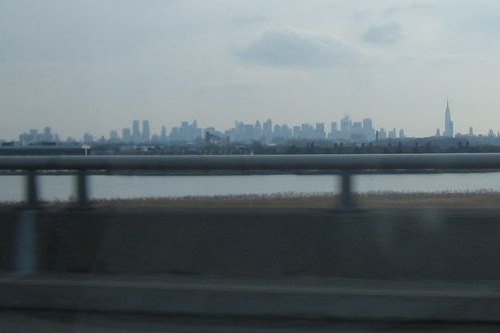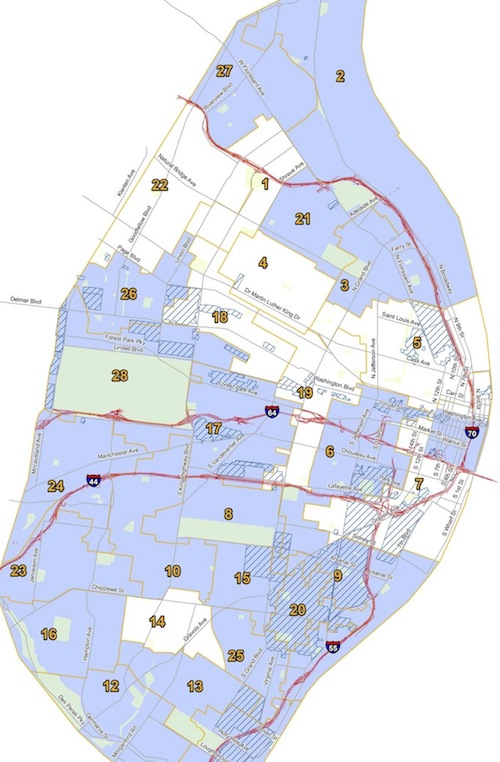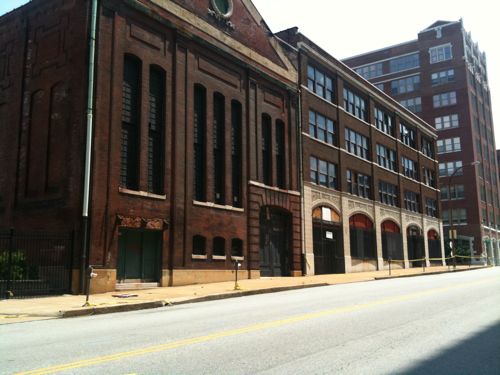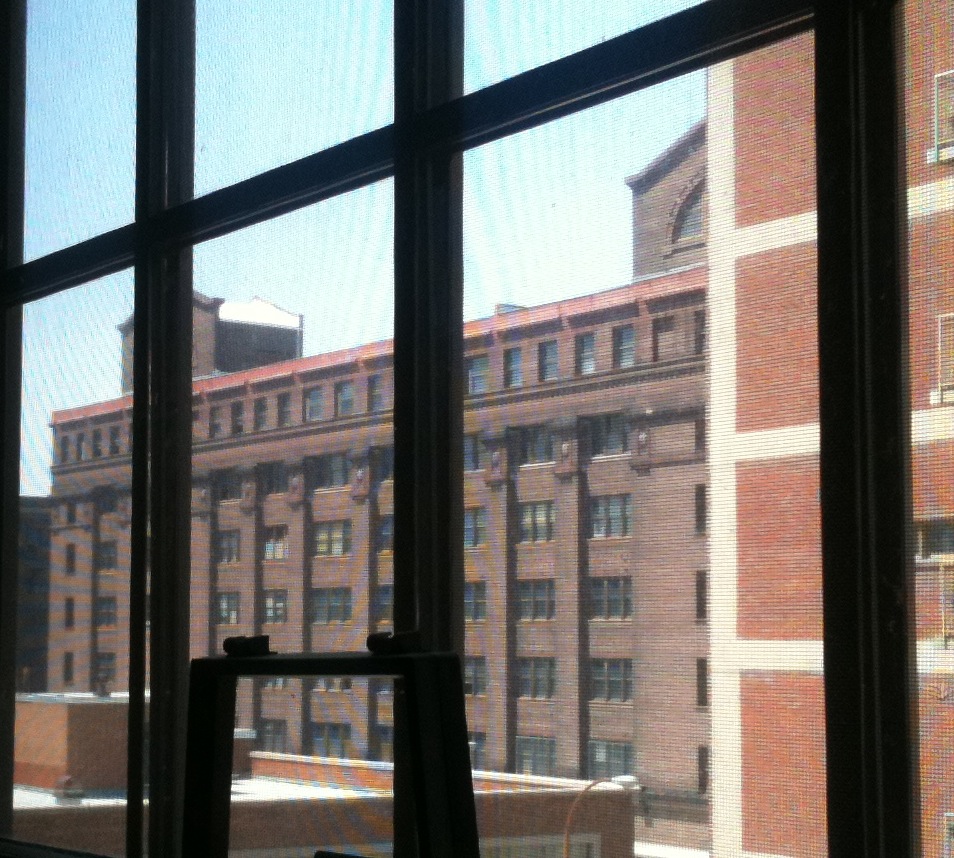Midtown’s Sun Theater is So Appealing
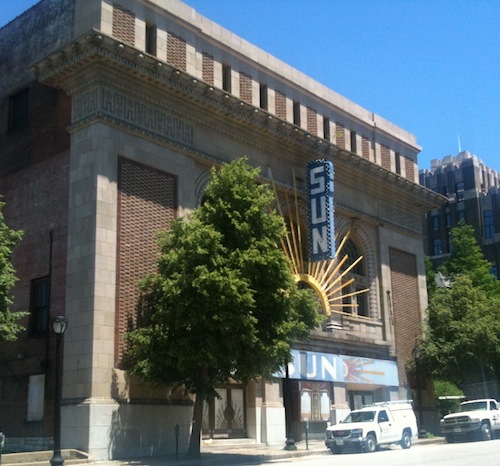
Few vacant buildings in St. Louis are as captivating to me as midtown’s Sun Theater. Why is that? The massing & detailing is pleasant but not extraordinary. The materials used compliment each other nicely. But what if the neon sign were gone? See a nighttime photo of the sign at Cinema Treasures.
Michael Allen successfully argues the appeal is not the sign, but the facade:
The Sun’s main attraction is its gorgeous neoclassical front elevation, articulated by glazed cream terra cotta, a projecting cornice and striking framed brick panels. The terra cotta includes theatrical grotesques over the arched windows at center and in the cornice’s upper garland course. These grotesques and other pieces are accented with a brilliant blue glaze. Two fluted pilasters with ionic capitals at the center bay over the entrance project a sense of gravitas contrasting with the more Baroque sensibilities of the rest of ornament.
Landmark’s Association placed the Sun on their Most Endangered List in 2007:
Putting the *Sun Theater at 3627-31 Grandel Square on our endangered list is merely an early warning. The pedestrian-friendly Renaissance Revival theater, built by the German Theater Society in 1913 from plans by Widmann & Walsh, is graced by an elaborately decorated front elevation complete with grotesque theatrical masks and heavy garlands. Inside, the $120,000 playhouse originally featured an 1800-seat, first-floor theater for German-speaking stock companies; a lecture hall was located on the second floor. The 1915 City Directory documents the two original names in use at the same time: The Victoria Theatre and The German Theatre.
With World War I came a national backlash against Germans and the theatre closed. Reopened after the war under new management as The Liberty, the building (with seating reduced to 1000) has since housed movies, vaudeville, burlesque, a night club and an evangelical church. (Later name changes included the World, the Sun and the Lyn.) LANDMARKS’ Midtown National Register nomination from 1978 described the remains of the interior as follows: “Bits of maroon, red and gold are faintly visible through the gloom of an interior picked by scavengers.” Vacant since 1981 and now owned by the city’s Land Reutilization Authority (LRA), the exterior (sporting volunteer trees and a cheerful “Sun” sign installed and maintained by Grand Center) is starting to show alarming signs of deferred maintenance. Recent hopeful rumors suggest that a media-related reuse is under consideration.
Apparently the Grand Center Arts Academy plans to renovate the building as an expansion of their newly renovated space next door, to the east. Let’s hope they, or anyone, renovates and occupies the structure soon.
– Steve Patterson
 In the poll last week readers made it clear they don’t want to need a prescription to buy common cold & allergy medication:
In the poll last week readers made it clear they don’t want to need a prescription to buy common cold & allergy medication:
